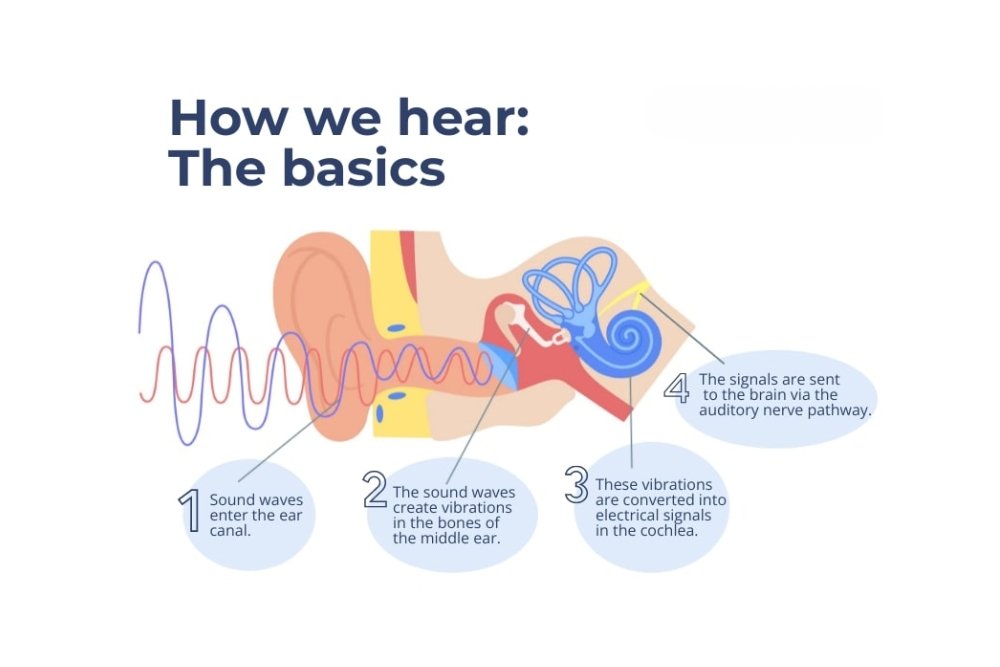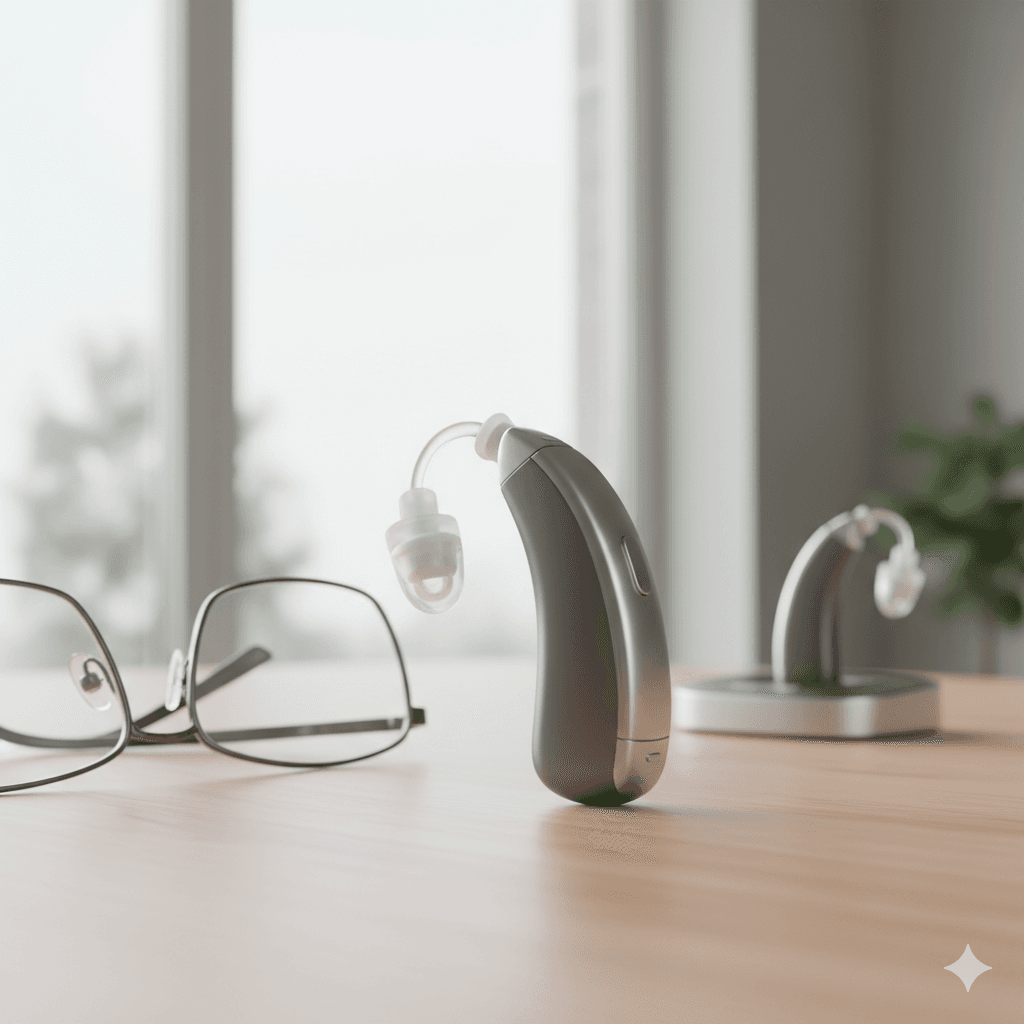Senior Audiologist • 10/8/2025
Should I buy an ear machine or a hearing aid?” is a common question that comes up when people begin to notice hearing problems.
Although both terms are widely used in India, they have different meanings. Though there are significant differences in terms of technology, performance, comfort, and long-term hearing health, many people refer to hearing aids as “ear machines.
The differences between ear machines and hearing aids, their functions, and which is best for you will all be covered in this article.
An ear machine refers to any instrument used to amplify sound for those who are hard of hearing. Most of these are simply sound amplifiers that make an environment’s sound louder without any form of processing or filtering.
These devices can be purchased freely without any form of hearing assessments or prescriptions; they are available over the counter or online.
The following are general features of ear machines:
All sounds are amplified equally, meaning speech and noise are treated the same.
Devices are usually analog or of low quality and grade digitally.
No adjustments are made to an individual hearing machine to account for varying hearing loss degrees.
These devices are cheap and can be obtained with ease over the internet or from the pharmacy.
They provide minimal ease of use and can induce feedback or phonic loops that are uncomfortable.
Example: An ear machine is like a TV with the volume turned up when the speech is muffled and the sounds are incoherent; this helps with temporary loudness, but does nothing to improve the clarity of speech in a noisy setting.
In short: Ear machines amplify sound without any enhancements.
Hearing aids are custom-made devices that do more than just amplify sound. They process it. Hearing aids are made based on a hearing test (audiogram) performed by a licensed hearing health professional. They also consider individual hearing loss profiles.
Features of digital hearing aids include:
Signia, Phonak, Oticon, and Widex are high-quality brands audiologist will trust.
Hearing aids do more than amplify sound. They enhance hearing clarity and comfort. Hearing aids are customizable and will improve your hearing experience greatly.
| Feature | Ear Machine | Hearing Aid |
|---|---|---|
| Technology | Basic analog amplification | Advanced digital sound processing |
| Customization | One-size-fits-all | Tailored to individual hearing test |
| Sound Quality | Amplifies all sounds equally | Focuses on speech, reduces noise |
| Comfort | May cause feedback / whistling | Ergonomic and secure fit |
| Hearing Loss Suitability | Mild or temporary issues | Mild to profound hearing loss |
| Connectivity | None | Bluetooth®, smartphone control |
| Battery | Standard / disposable | Rechargeable options available |
| Maintenance | Limited or none | After-sale service by audiologist |
| Price Range (₹) | ₹2,000 – ₹10,000 | ₹30,000 – ₹3,00,000 |
| Medical Approval | Usually non-medical | Medically certified devices |
| Availability | Online / local shops | Authorized hearing clinics |
At their most basic level, ear machines have a microphone that captures sound, uniformly amplifies the sound, and transmits the sound to the ear through a miniature speaker.
The machines do not have any digital filters and do not make automatic adjustments which means that soft speech may still be unclear and loud sounds may become dramatically uncomfortable.
These are appropriate only for:
mild, situational difficulty hearing;
people seeking temporary sound amplification;
those not ready for a hearing aid.
Unregulated amplifiers, however, may cause ear fatigue and distortion, and may cause irreversible hearing loss.

Real-time hearing aid application technology analyzes and improves sounds. It figures out what sounds are dominant and what sounds are background noise. It enhances sounds that are important and decreases distracting background noise.
The typical hearing aid hearing consists of:
Microphones – capturing sounds in your environment.
Processor/Chip – the sounds are digitally processed and refined.
Receiver/Speaker – clear sounds are sent to your ear.
Battery – the system is powered by disposable and rechargeable batteries.
Adjustable features in modern hearing aids are connectivity and hearing aid apps. Users can adjust the hearing aid volume, change settings, and check hearing health.
Premium hearing aids such as Signia IX and Phonak Lumity use AI and are able to adjust hearing aids to different environments such as restaurants, busy streets, and concerts.

Ear machines cost less, but they do not match the performance or safety of a certified hearing aid.
Hearing helps offer the following advantages
Clearer sound – They boost speech and lower background noise.
Healthier hearing – They reduce auditory fatigue.
BrainHearing™ support – They keep the brain engaged during talks (Oticon).
Secure fit – Custom-molded shells are available.
Reliable build and service – They come with professional fitting, upkeep and a warranty.
Rechargeable power – Users skip frequent battery swaps.
The devices stay hidden – many sit almost out of sight behind the ear.
| Type | Description | Ideal For |
|---|---|---|
| BTE (Behind-the-Ear) | Sits comfortably behind the ear, suitable for all hearing losses. | All ages, severe loss. |
| RIC (Receiver-in-Canal) | Small, discreet, high-quality sound clarity. | Most common choice. |
| ITE (In-the-Ear) | Custom-fit inside ear shell. | Moderate hearing loss. |
| CIC / IIC (Completely-in-Canal / Invisible) | Virtually invisible, placed deep inside ear canal. | Style-conscious users. |
| Category | Price Range (₹) | Examples |
|---|---|---|
| Ear Machine (Basic Amplifier) | ₹2,000 – ₹10,000 | Generic sound amplifiers from pharmacy or online stores |
| Basic Hearing Aid (Entry Level) | ₹30,000 – ₹60,000 | Signia Prompt, Phonak Base models |
| Mid-Range Hearing Aid | ₹65,000 – ₹1,50,000 | Signia Insio, Phonak Paradise, Oticon Zircon |
| Premium Hearing Aid (Rechargeable / Bluetooth) | ₹1,60,000 – ₹3,00,000+ | Signia IX, Phonak Lumity, Oticon Real, Widex Moment |
The majority of ear devices lack medical approval, and using them without undergoing a hearing evaluation may exacerbate hearing loss.
They can excessively enhance specific frequencies, causing distortion or even ear discomfort.
If you think you have hearing loss, it’s important to see an audiologist first. A specialist will suggest the appropriate hearing aid after evaluating your hearing levels and lifestyle requirements.

Signia – German innovation, recognized for Bluetooth® and rechargeable designs.
Phonak – Swiss accuracy, adjustable noise cancellation, and pristine audio.
Oticon – Employs BrainHearing™ to naturally interpret sounds.
Widex – Renowned for realistic sound and low distortion.
Every brand provides various models tailored to hearing loss severity, financial considerations, and connectivity choices.
Summary
Although an ear machine offers momentary sound enhancement, a hearing aid provides genuine sound clarity, comfort, and medical dependability.
👉 Every hearing aid is an ear device, but not every ear device is a hearing aid.
To ensure long-term hearing health, consider investing in a suitable digital hearing aid recommended by an audiologist. It’s not merely about hearing at a higher volume — it’s about hearing more clearly, comprehending well, and remaining engaged with life





